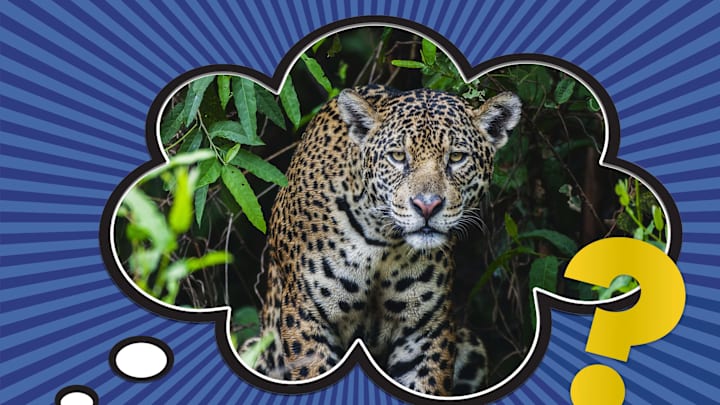How can you tell jaguars and leopards apart? Both of the big cats are spotted, toothy, whiskered, and huge. But there are plenty of differences that can tip you off, including their anatomy, behavior, and geographic ranges.
Body Shape | Habitat | Water? | |
|---|---|---|---|
Jaguars | Powerful, barrel-shaped | Forests, river valleys | Loves it |
Leopards | Slim, sleek | Savannas | Hates it |
Spots, Sizes, and More in Jaguars and Leopards

Let’s start with their gorgeous patterned fur. Both felines are covered with large, flower-shaped blotches called rosettes. In jaguars (Panthera onca), these rosettes frequently contain little black spots. Leopard (Panthera pardus) rosettes don’t have those markings, and they tend to be larger.
The difference in head shape is another giveaway. A jaguar’s head is markedly bigger and broader. That’s because these particular cats, which have the strongest bite relative to body size of any feline, have an especially brutal method of killing prey. They drive their tough canine teeth straight through skull bones and into their victims’ brains. Leopards prefer suffocating their prey with a well-placed bite to the throat and then dragging the kill into a tree to eat in peace.
Compared side by side, leopards and jaguars show differences in overall body type as well. Leopards are much slimmer creatures with longer limbs and tails, looking comparatively sleek to the jaguars’ bulkier, barrel-shaped torsos.
Different Habitats for Jaguars and Leopards

Perhaps the biggest difference between jaguars and leopards is their geographic range. Jaguars are found only in the Western Hemisphere from northeastern Argentina to southern Arizona, New Mexico, and Texas (though U.S. sightings are rare). Leopards are now found in pockets of sub-Saharan Africa and Asia, as far east as the Sea of Japan. However, the leopards’ historical range was much larger, covering all of sub-Saharan Africa as well as vast sections of the the Caucasus, Iran, Afghanistan, Pakistan, India, China, and Southeast Asia.
Jaguars and leopards are adapted to different habitats as well. Jaguars live in forests, scrublands, swamps, and river valleys, usually around rivers or streams, and they’re good swimmers. Lightly built leopards live in savannas and grasslands, where they often climb trees to rest or scan for prey.
What About Panthers?

Both jaguars and leopards are members of the genus Panthera along with lions and tigers (collectively, the four are known as the ”roaring cats”). The term panther, however, usually describes either leopards or pumas.
Confusingly, only leopards and jaguars can be “black panthers.” They’re the only big cats known to exhibit melanism, an overabundance of the pigment melanin that gives them a charcoal tone and almost obscures their spots. The actual puma/panther (Puma concolor, also called a cougar, mountain lion, or catamount) does not experience melanism.
A version of this story was published in 2015; it has been updated for 2024.
